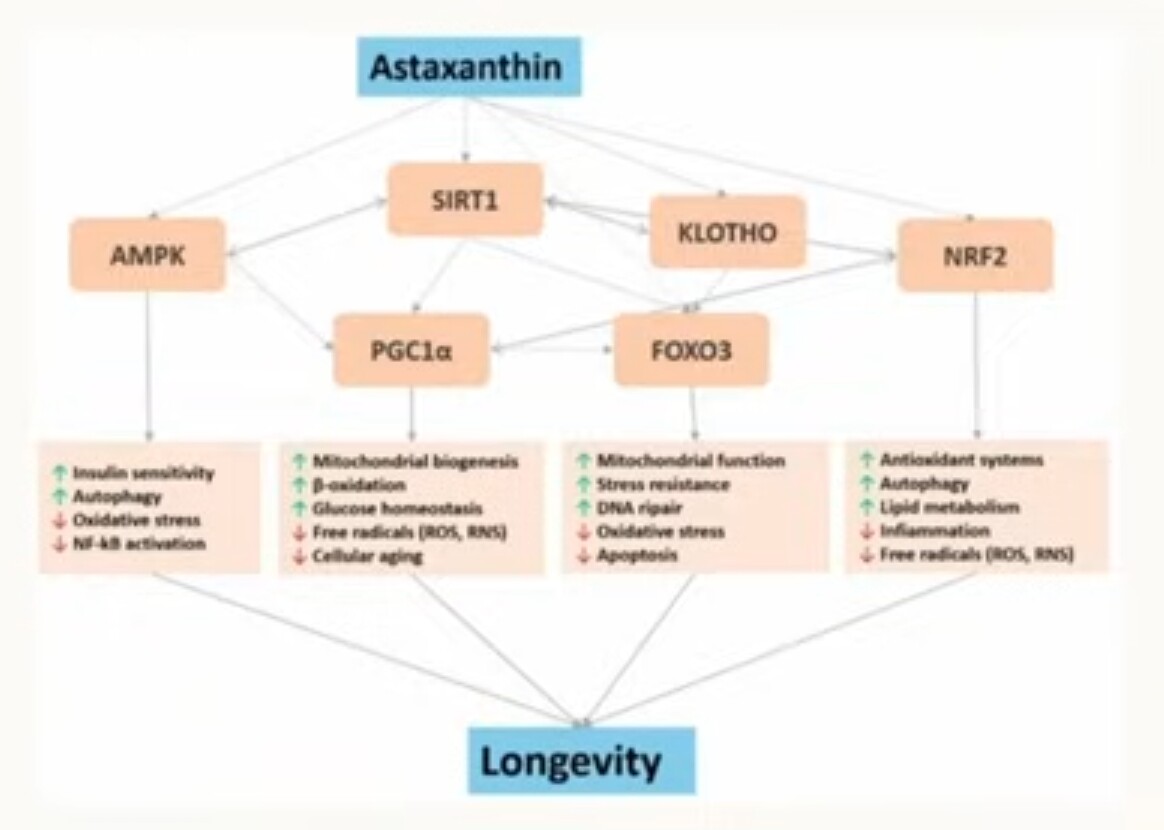I know it’s very strange, I tried many times though and adjusted the dose each time and it was still just very bad for me. I’m beyond confident
My doctor said “I looked at the AX3 and it has corn starch and glucose syrup, not ideal” - what are people’s thoughts?
Are those things in a high enough amount to be negative or just trace amounts?
On the one hand, your doctor is right - those would not seem to be ideal ingredients. But - on the other hand, we have lifespan studies from the top group doing lifespan studies (in mice) with great results. So, obviously the downsides of these two ingredients (which, as you suggest, are likely just trace amounts) don’t significantly negatively impact the benefits.
Given the choice between a product that has proven itself in ITP lifespan studies (even if it has some small amount of undesirable elements) vs. an unproven compound (without these elements) - I would choose the proven compound every time.
‘Not ideal’ but not remotely worth worrying about. There’s going to be like 100 mg of these as fillers, max. And as RapAdmin says, this is the stuff that just extended max LS (and very high doses) in the ITP and is reported to have better ADME than the natural stuff that everyone else sells.
Both the corn starch and the glucose syrup are just glucose, and in a trace amount. I wouldn’t worry about that. I’d worry about the cost.
It is an antihistamine, if that means anything to you.
What kind of hyperoptimizer are they, does your doctor do everything optimally already?
The Effects of Astaxanthin on Cognitive Function and Neurodegeneration in Humans: A Critical Review
Oxidative stress is a key contributing factor in neurodegeneration, cognitive ageing, cognitive decline, and diminished cognitive longevity. Issues stemming from oxidative stress both in relation to cognition and other areas, such as inflammation, skin health, eye health, and general recovery, have been shown to benefit greatly from antioxidant use. Astaxanthin is a potent antioxidant, which has been outlined to be beneficial for cognitive function both in vitro and in vivo. Given the aforementioned promising effects, research into astaxanthin with a focus on cognitive function has recently been extended to human tissue and human populations. The present critical review explores the effects of astaxanthin on cognitive function and neurodegeneration within human populations and samples with the aim of deciphering the merit and credibility of the research findings and subsequently their potential as a basis for therapeutic use. Implications, limitations, and areas for future research development are also discussed. Key findings include the positive impacts of astaxanthin in relation to improving cognitive function, facilitating neuroprotection, and slowing neurodegeneration within given contexts.
Hi all, my first post here, coincidentally I’ve been recently diving into the benefits of Astaxanthin and have some perplexities about the ITP study.
I appreciate the scientific rigor and attention to detail that govern this discussion, but I cannot wonder whether the ITP paper has been a useful intervention at all.
First of all the use of synthetic astaxanthin, which according to the experts consulted (and some literature) was the best guarantee of success. I think the purity of the molecule has governed the decision here, but apparently, according to the many hours of podcasts from researchers from companies producing astaxanthin (a little conflict of interest, but those researchers are very credible and papers have been cited) usually natural Asta from Haematococcus Pluvialis is considered to be many times more effective in antioxidant power and in the benefits delivered (skin, eyes, cognitive, athletic and more).
Now, the ITP paper cites literature which is affirming the opposite (synthetic= much better than natural). So we have heavily conflicting sources. What makes me wonder a lot though, is the absolute impracticality, discussed in the above posts, of the dosage used in mice. All right, the reasons have been exposed, but to all practical effects this study is just about useless in human supplementation.
At this point, I’m also wondering if it has any advantage to repeat the experiment with a lower albeit still impractical dosage. I’m also wondering if the results in mice can be exported at all to humans, considering all conversions made to the dosage used.
But at the end, leaving aside all pessimistic considerations, the most useful study would be to administer to mice the equivalent of a human 10 to 20 mg daily dosage, something which is totally compatible with the product affordability and the potential adverse effects.
The dosing of astaxanthin is interesting for anyone who has read the other thread on it. It turns out that the 12% like span benefit was achieved with a much lower dose than targeted.
“The present ITP study is the first evaluation of Asta in a mammalian lifespan model, so the target dose of 4000 ppm in the diet is based on chronic mammalian studies other than lifespan. Despite the fact that the average diet contained 1840 ppm Asta (only 46% of the target), median lifespans of male UM-HET3 mice were significantly improved”
…so the target dose of 4000 ppm in the diet is based on chronic mammalian studies other than lifespan
The above kinda makes me cringe, if the conversions carried out in the preceding posts are right, the mammalians previously studied have been subjected to the equivalent of Gigadoses, or perhaps Teradoses, in human terms.
Again, the usual dosage advised to humans is 4 mg/d, 16 mg/d max, so at 1500 mg we would be at two orders of magnitude higher, taking the present upper threshold as a reference.
The papers I have read suggest that the dose of meclizine and astaxanthin needed to do anything useful in extending the human life span is impractical.
Meclizine does however have some “practical” uses at “practical” doses.
@desertshores You don’t think that a smaller dose would be beneficial? With most drugs, it’s the initial smaller amount that does the heavy lifting. The extra dosage at the end usually is less efficient. Throwing in 12 mg of Astaxanthin daily probably couldn’t hurt.
The problem is that we don’t have low-dose trials.
I like both astaxanthin and meclizine. Meclizine, unfortunately, because it has a half-life of ~6 hrs doesn’t completely clear the system in 24 hrs.
So, only taking 25mg daily, after a few days it builds up in my system and causes daytime sleepiness. I might try it again for a longer period to see if maybe I can build up a tolerance for it.
(I have the time for a daytime nap)
Agree about dosing. It seems to me if they are going to do high dosing based on someone’s speculation, they should have at least one arm that includes dosing that can be achieved by diet or reasonable supplementation. ITP should also explicitly translate their results into human equivalent dose to avoid confusion, and hype by pill pushers.
@Peterz54 I think their goal is to increase understanding of fundamental ways that aging biology can be perturbed
Trading off the studies’ designs to down select dosing to only those translational to humans from the outset will discover less fundamental understanding since a higher percent of the experiments will be “failures” with treatment arm not statistically different than control arms
Is there a way to find a list of what else the ITP is currently testing?
The full list is here: https://www.nia.nih.gov/research/dab/interventions-testing-program-itp/supported-interventions
We don’t know which interventions they’re currently considering for the next batch. I did an FOIA request but it was denied on some dubious grounds. I appealed.
My key takeaway; the equivalent human dose to the one used in the ITP study is 36-84mg of astaxanthin. Apparently humans absorb it much better than mice.
For me the takeaway is that your body stores astaxanthin in body tissues to be used later on instead of clearing it like normal medicines. This means the half-life is exceptionally long.
In addition, you need to take it with food to absorb it.
Also, that you might turn pink if you take too much continuously.


